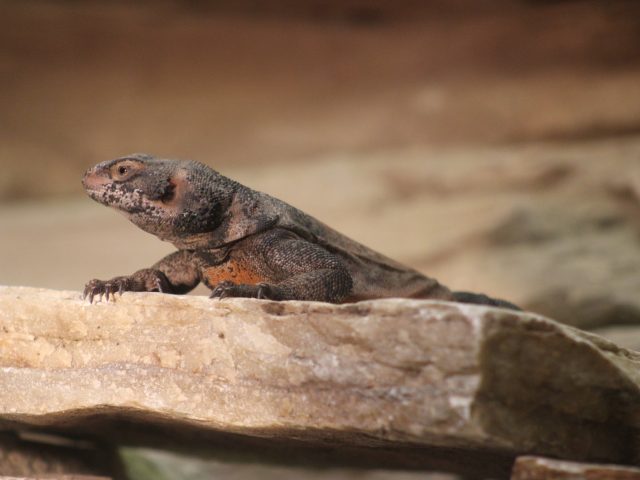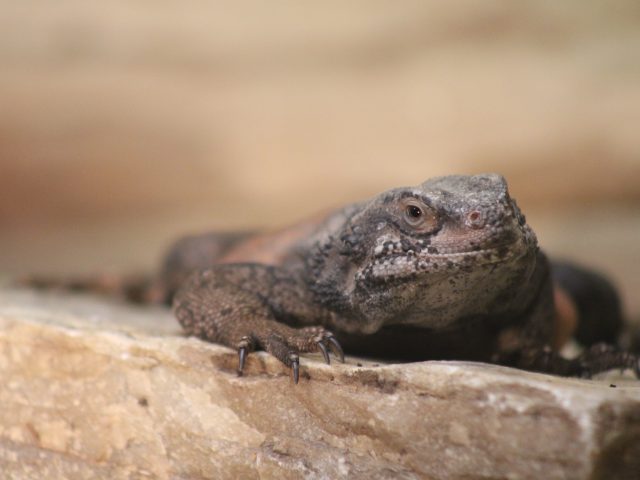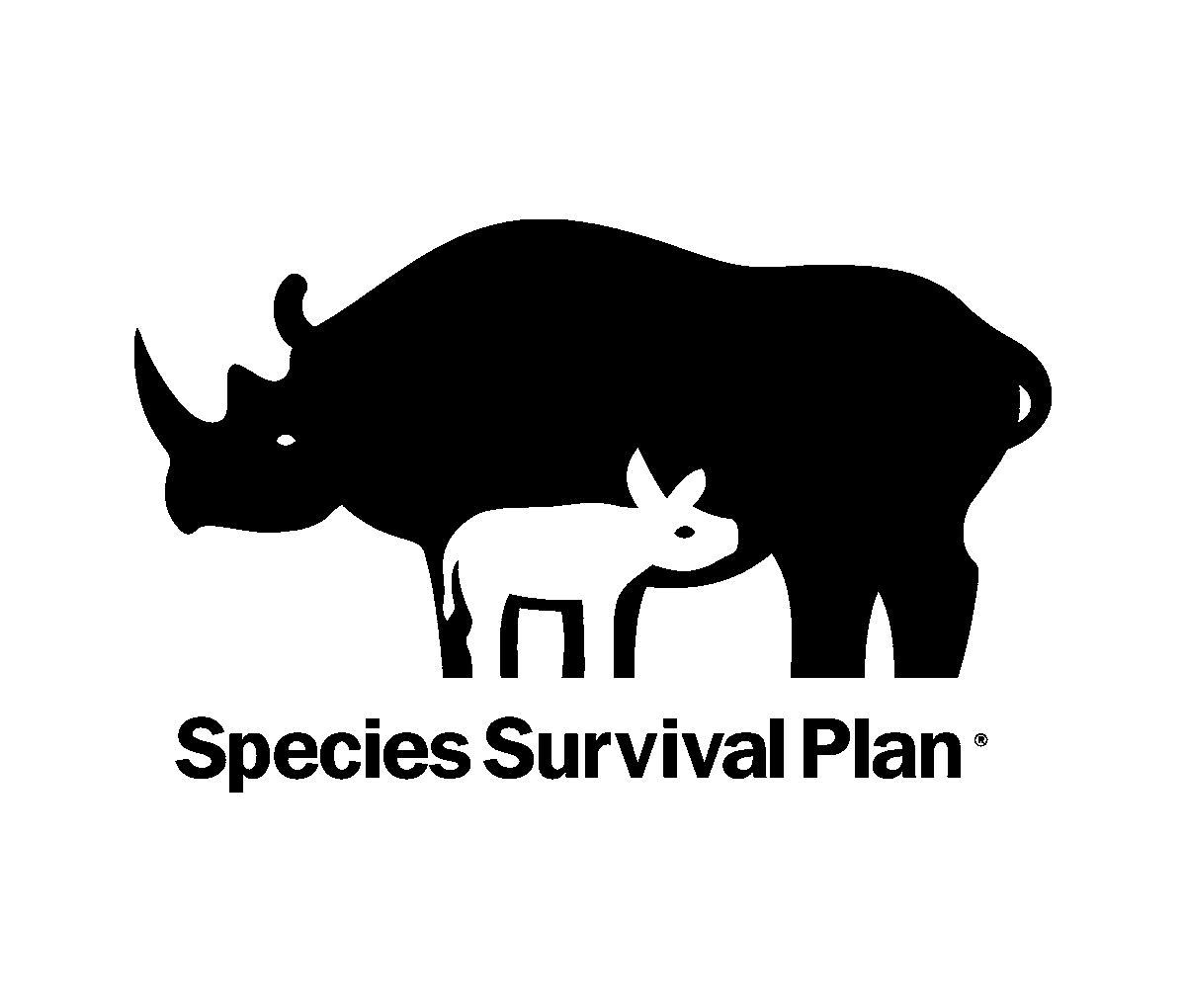Characteristics
Large, flat-bodied lizard found in the arid regions of the southwestern parts of the US and Mexico, particularly the Mohave and Sonoran deserts. Coloration ranges from brown to black, with a tan speckled mid-body. This coloration acts as camouflage in their natural habitat. They are well-adapted to desert temperatures and will remain active up to 102°F.
Behavior
When threatened, chuckwallas squeeze themselves into rock crevices and use their lungs to inflate their bodies, wedging the lizard into place. This makes it nearly impossible to remove the chuckwalla from the crevice. Chuckwallas use push-ups, head bobbing, and gaping mouths to communicate. They will utilize underground burrows and crevices in the winter months for brumation.
Did You Know?
It takes a chuckwalla 25 years to reach adult size.
Chuckwallas have keen eyesight and can perceive movement at a distance of 30 meters.
Reproduction
Mating occurs in late spring, with 5-16 eggs being laid in an underground nest between June and August. The eggs will generally hatch in September, when temperatures begin to cool slightly. Sexual maturity is based on size, not age, and chuckwallas must be around 5″ in length before they are able to reproduce. Food abundance has a large impact on fertility and breeding success.
Our Animals
We have two chuckwalla living on exhibit with Gila monsters in the Reptile Building.





